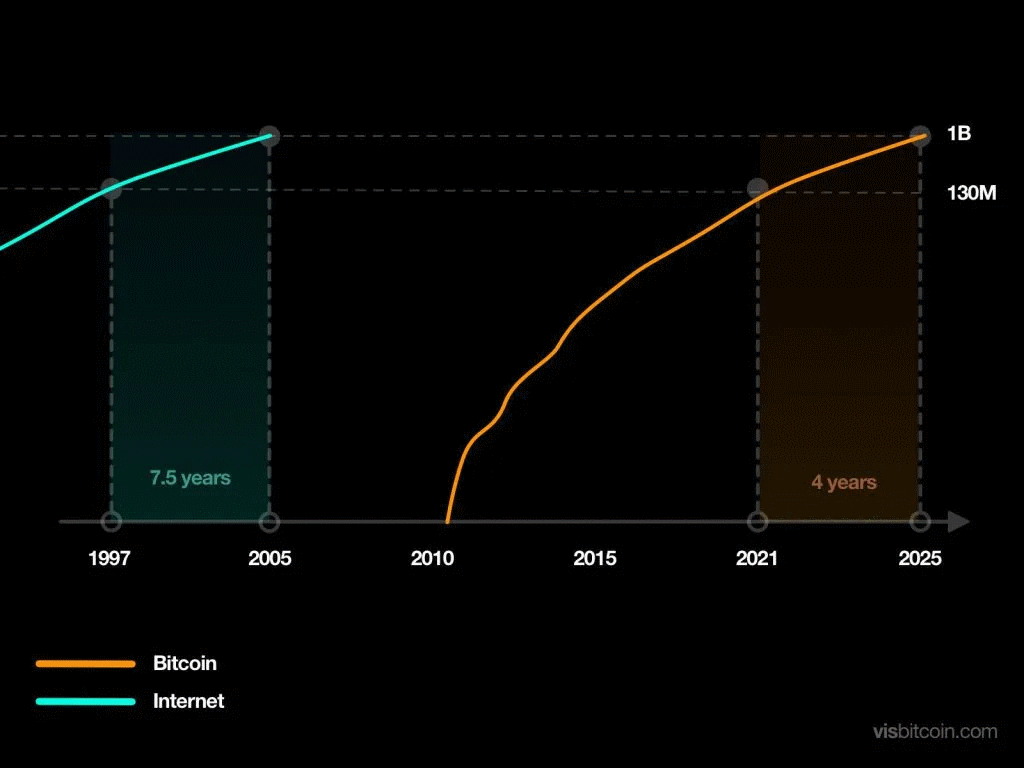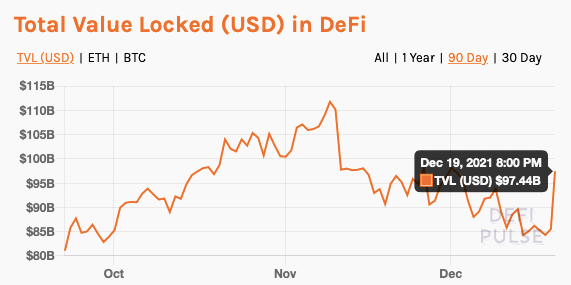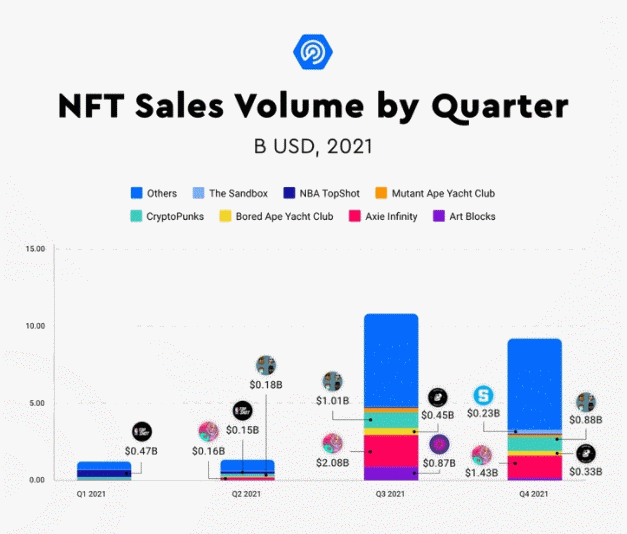IMAGE SOURCE
This year the ultra-rich got even richer. Elon Musk saw his fortune grow by $194 billion during the COVID-19 pandemic, followed by Jeff Bezos who saw his fortune increase by $85 billion. The world’s economic powers made the rich even richer, and the poor even poorer. To explain why this happened we need to look at the Cantillon Effect. The basic theory of the Cantillon Effect refers to the change in relative prices resulting from a change in money that’s in circulation. Cantillon explained that the first ones to receive the newly created money see their wealth rise, whereas the last ones to receive the newly created money see their purchasing power decline because inflation hits. In simple English when a state prints a lot of money, the biggest share of the wealth goes to those at the very top. Bitcoin and decentralization constitute the perfect antidote. In a bitcoin world, rather than being rewarded for privilege, status, and geography, only those living closer to the truth can reap the fruits of value creation. This past year has been a groundbreaking year for bitcoin and the cryptocurrency industry everywhere across the planet. There are so many examples of how the market for cryptocurrencies has expanded just in the last year. What’s ahead in 2022 for cryptocurrencies?
2021 was a breakout year for cryptocurrencies. Bitcoin made strides towards mainstream acceptance with major websites like Expedia and Microsoft accepting it as a means of exchange, even universities like Penn begin to accept crypto for tuition payments. Coinbase’s IPO was a landmark moment for crypto. The first Bitcoin ETF started trading on the New York Stock Exchange. Companies diversified their portfolios and cash reserves with bitcoin. Defi has more than quadrupled from 2020 to $100 billion. Non-Fungible Tokens (NFTs) gained ground, with sales of these assets setting new records at major auction houses. El Salvador became the first country in the world to accept bitcoin as legal tender. Regulators made it clear they are paying attention to the crypto industry.
Cryptocurrencies moved from the fringes of society to become a focal point for policymakers, big tech, and institutional investors. In the coming year, there are many areas where cryptocurrencies will gain steam and several things we need to pay attention to: Adoption, Regulation, Defi, Hacks, NFTs.
Accelerated adoption
This has been a crazy year for cryptocurrencies, with a tremendous amount of real activity. Adoption by financial institutions such as Square, PayPal, Revolut, and Robinhood has brought blockchain technology and cryptocurrencies mainstream. About half of the crypto traders in the US got into the market in the last year and there are now at least 300 million crypto accounts worldwide. In “Geography of Cryptocurrency”, a report by Chainalysis, the number of new wallets worldwide increased 45% from January 2020 to January 2021, to an estimated 66 million. Coinbase says it has now over 73 million users and 10,000 institutions using its platform. Gemini released its “State of U.S. Crypto Report,” which found 21.2 million Americans own some cryptocurrency.
This year the ultra-rich got even richer. Elon Musk saw his fortune grow by $194 billion during the COVID-19 pandemic, followed by Jeff Bezos who saw his fortune increase by $85 billion. The world’s economic powers made the rich even richer, and the poor even poorer. To explain why this happened we need to look at the Cantillon Effect. The basic theory of the Cantillon Effect refers to the change in relative prices resulting from a change in money that’s in circulation. Cantillon explained that the first ones to receive the newly created money see their wealth rise, whereas the last ones to receive the newly created money see their purchasing power decline because inflation hits. In simple English when a state prints a lot of money, the biggest share of the wealth goes to those at the very top. Bitcoin and decentralization constitute the perfect antidote. In a bitcoin world, rather than being rewarded for privilege, status, and geography, only those living closer to the truth can reap the fruits of value creation. This past year has been a groundbreaking year for bitcoin and the cryptocurrency industry everywhere across the planet. There are so many examples of how the market for cryptocurrencies has expanded just in the last year. What’s ahead in 2022 for cryptocurrencies?
2021 was a breakout year for cryptocurrencies. Bitcoin made strides towards mainstream acceptance with major websites like Expedia and Microsoft accepting it as a means of exchange, even universities like Penn begin to accept crypto for tuition payments. Coinbase’s IPO was a landmark moment for crypto. The first Bitcoin ETF started trading on the New York Stock Exchange. Companies diversified their portfolios and cash reserves with bitcoin. Defi has more than quadrupled from 2020 to $100 billion. Non-Fungible Tokens (NFTs) gained ground, with sales of these assets setting new records at major auction houses. El Salvador became the first country in the world to accept bitcoin as legal tender. Regulators made it clear they are paying attention to the crypto industry.
Cryptocurrencies moved from the fringes of society to become a focal point for policymakers, big tech, and institutional investors. In the coming year, there are many areas where cryptocurrencies will gain steam and several things we need to pay attention to: Adoption, Regulation, Defi, Hacks, NFTs.
Accelerated adoption
This has been a crazy year for cryptocurrencies, with a tremendous amount of real activity. Adoption by financial institutions such as Square, PayPal, Revolut, and Robinhood has brought blockchain technology and cryptocurrencies mainstream. About half of the crypto traders in the US got into the market in the last year and there are now at least 300 million crypto accounts worldwide. In “Geography of Cryptocurrency”, a report by Chainalysis, the number of new wallets worldwide increased 45% from January 2020 to January 2021, to an estimated 66 million. Coinbase says it has now over 73 million users and 10,000 institutions using its platform. Gemini released its “State of U.S. Crypto Report,” which found 21.2 million Americans own some cryptocurrency.
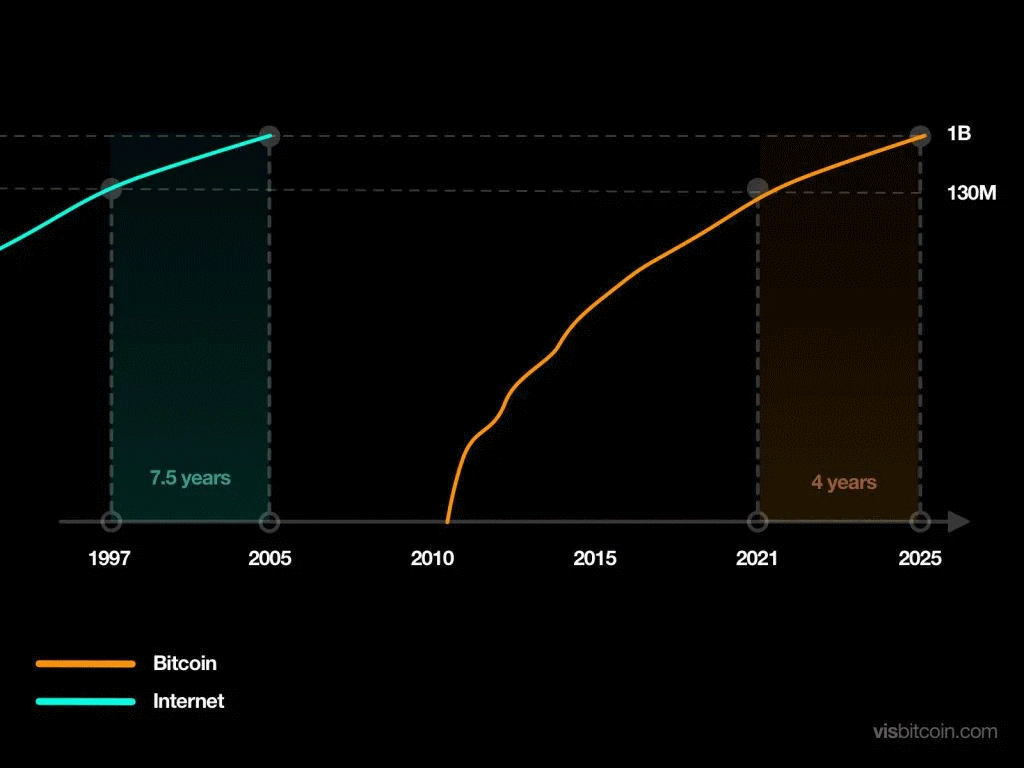
Bitcoin’s adoption has been increasing at an annual rate of 113%, faster than people who adopted the internet with 63% annual growth. Assuming this growth continues, the acceleration of new adoption could keep pushing the value of bitcoin higher and higher and we could hit 1 billion users by 2024 and 4 billion users by 2030.
Regulation is coming
Lack of regulation is a major barrier to mainstream crypto acceptance, but earlier this month US Congress got a crash course on cryptocurrency and invited executives from six crypto companies to testify before the House Financial Services Committee. The Federal Reserve, FDIC, and OCC are analyzing various issues regarding crypto-assets and issued a joint statement that they would produce a set of directives on crypto. The Biden administration has put together a highly qualified team to steer the cryptocurrency regulation process led by the US. Treasury Secretary Janet Yellen and the chairman of the SEC, Gary Gensler.
In Europe, the regulations will also become much more clear in 2022. The EU’s framework for regulating crypto is closer to ratification. On November 24th, 2021, the European Council adopted its position on the Markets in Crypto Assets (MiCA) framework. MiCA promises to make it easier for crypto firms to expand throughout the region by facilitating a “passport” license. Although MiCA does not apply to NFTs, I am sure that we will see the EU tackle this space after they lay the initial groundwork for the industry.
In 2022, both the US and EU will embrace cryptocurrencies, and will permanently alter the crypto landscape. While regulators are moving slowly, we are heading in the right direction. The clearer the regulations, the better it will be for the industry and should create a positive impact for investors’ portfolios.
DeFi will continue to thrive
Defi has grown tremendously in 2021. Going from a Total Value Locked (TVL) of just over $10 billion at the beginning of 2020, it reached over $100 billion market cap. Staking is now an $18 billion behemoth and will gain even more traction as a source of revenue for both institutional and retail investors, as Ethereum moves from Proof of Work (PoW) to Proof of Stake (PoS).
Regulation is coming
Lack of regulation is a major barrier to mainstream crypto acceptance, but earlier this month US Congress got a crash course on cryptocurrency and invited executives from six crypto companies to testify before the House Financial Services Committee. The Federal Reserve, FDIC, and OCC are analyzing various issues regarding crypto-assets and issued a joint statement that they would produce a set of directives on crypto. The Biden administration has put together a highly qualified team to steer the cryptocurrency regulation process led by the US. Treasury Secretary Janet Yellen and the chairman of the SEC, Gary Gensler.
In Europe, the regulations will also become much more clear in 2022. The EU’s framework for regulating crypto is closer to ratification. On November 24th, 2021, the European Council adopted its position on the Markets in Crypto Assets (MiCA) framework. MiCA promises to make it easier for crypto firms to expand throughout the region by facilitating a “passport” license. Although MiCA does not apply to NFTs, I am sure that we will see the EU tackle this space after they lay the initial groundwork for the industry.
In 2022, both the US and EU will embrace cryptocurrencies, and will permanently alter the crypto landscape. While regulators are moving slowly, we are heading in the right direction. The clearer the regulations, the better it will be for the industry and should create a positive impact for investors’ portfolios.
DeFi will continue to thrive
Defi has grown tremendously in 2021. Going from a Total Value Locked (TVL) of just over $10 billion at the beginning of 2020, it reached over $100 billion market cap. Staking is now an $18 billion behemoth and will gain even more traction as a source of revenue for both institutional and retail investors, as Ethereum moves from Proof of Work (PoW) to Proof of Stake (PoS).
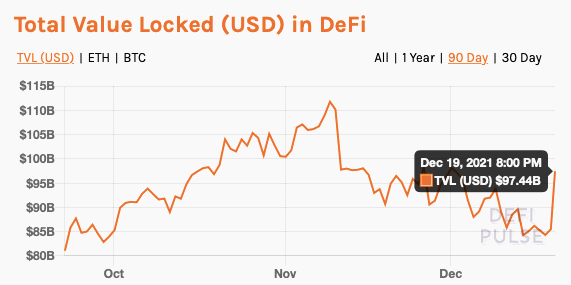
There’s really no reason to think that more money won’t continue to pour into the space. There are so many projects, such as Polygon, Solana, Internet Computer, and many more, that are just getting started and have so much to offer. According to Matthew Roszak, an American billionaire venture capitalist and cryptocurrency investor, decentralized finance has grown $80 billion in 2021 and is poised to explode 10-fold in 2022, making it an $800 billion industry next year.
More hacks and thefts
Hackers have made off with billions of dollars in digital assets in the past year by compromising cryptocurrency exchanges. There have been more than 20 hacks this year where a hacker stole at least $10 million in digital currencies from a crypto exchange or project. In at least six cases, hackers stole more than $100 million. One of the biggest heists happened in early December when the crypto trading platform Bitmart announced that hackers broke into a company account and stole almost $200 million. A group of hackers in August stole $613 million in digital coins from token-swapping platform Poly Network.
Norton Labs claims that crypto scams will gain momentum next year, and are likely to increase as more users buy in. Norton warns that 2022 will see more hacking, more scammers, and a bigger need for security.
Anybody, anytime, that gets your private key can move funds from your wallet to theirs. So make sure this year to move your funds out of centralized exchanges and into a non-custodial wallet where you are the only one that holds the private key.
The best is yet to come for NFTs
NFTs had a breakout year in 2021, but the best is yet to come. Data from DappRadar showed that trading in NFTs reached $22 billion in 2021, compared with just $100 million in 2020, and that the floor market cap of the top 100 NFTs ever issued, a measure of their collective value, was $16.7 billion.
More hacks and thefts
Hackers have made off with billions of dollars in digital assets in the past year by compromising cryptocurrency exchanges. There have been more than 20 hacks this year where a hacker stole at least $10 million in digital currencies from a crypto exchange or project. In at least six cases, hackers stole more than $100 million. One of the biggest heists happened in early December when the crypto trading platform Bitmart announced that hackers broke into a company account and stole almost $200 million. A group of hackers in August stole $613 million in digital coins from token-swapping platform Poly Network.
Norton Labs claims that crypto scams will gain momentum next year, and are likely to increase as more users buy in. Norton warns that 2022 will see more hacking, more scammers, and a bigger need for security.
Anybody, anytime, that gets your private key can move funds from your wallet to theirs. So make sure this year to move your funds out of centralized exchanges and into a non-custodial wallet where you are the only one that holds the private key.
The best is yet to come for NFTs
NFTs had a breakout year in 2021, but the best is yet to come. Data from DappRadar showed that trading in NFTs reached $22 billion in 2021, compared with just $100 million in 2020, and that the floor market cap of the top 100 NFTs ever issued, a measure of their collective value, was $16.7 billion.
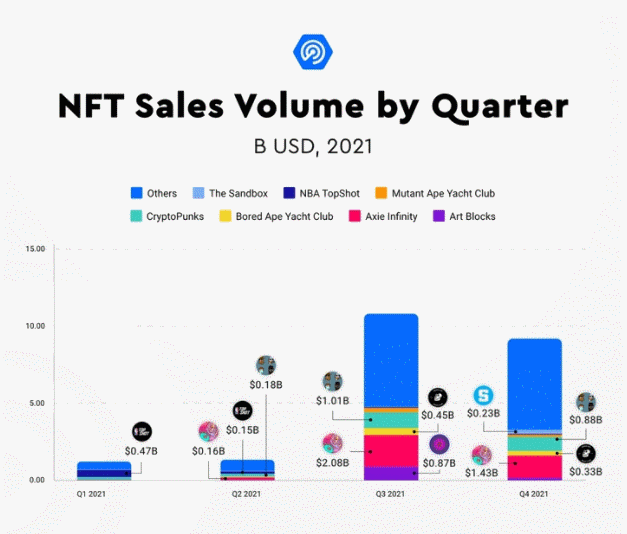
With blockchain technologies to create art that can never be forged, there is no doubt that the NFT space is increasing investor interest and projects. The most valuable NFT sale this year was The First 5000 Days, a digital collage by Beeple, the name used by the American digital artist Mike Winkelmann, that was auctioned for $69.3 million in March, making it one of the most valuable pieces of art ever sold by a living artist.
Although NFTs began as a way to formalize the ownership of digital art, they have since expanded to include other types of digital property, including digital real estate. The coming year will mark the year superfans will use their collective decentralized power to fuel creativity from their favorite artists via blockchain-related opportunities. As more NFT applications emerge, this space will continue to grow.
Every day with cryptocurrencies is a surprise. Developers in the space are working on difficult problems trying to reduce power consumption, enhance security, stability, speed, and offer a better user experience. But also the next scam/fake project, that’s trying to take your money and then disappear, is right around the corner. And let’s not forget about hackers that will try every trick in the book to rip off your hard-earned crypto. Bitcoin and decentralized applications will continue to be successful in 2022 as we have now reached a stage where blockchain technology is reaching the mainstream, but always look left and right before crossing the street and tread carefully.
Although NFTs began as a way to formalize the ownership of digital art, they have since expanded to include other types of digital property, including digital real estate. The coming year will mark the year superfans will use their collective decentralized power to fuel creativity from their favorite artists via blockchain-related opportunities. As more NFT applications emerge, this space will continue to grow.
Every day with cryptocurrencies is a surprise. Developers in the space are working on difficult problems trying to reduce power consumption, enhance security, stability, speed, and offer a better user experience. But also the next scam/fake project, that’s trying to take your money and then disappear, is right around the corner. And let’s not forget about hackers that will try every trick in the book to rip off your hard-earned crypto. Bitcoin and decentralized applications will continue to be successful in 2022 as we have now reached a stage where blockchain technology is reaching the mainstream, but always look left and right before crossing the street and tread carefully.

Ilias Louis Hatzis
Ilias Louis Hatzis is the Founder & CEO at Mercato Blockchain Corporation AG.
Ilias Louis Hatzis is the founder and CEO at Kryptonio wallet. Create your wallet in less than a minute, without seed phrases, private keys, passwords or documents. Keep your bitcoin and digital assets always secure and recoverable: https://kryptonio.com
I have no positions or commercial relationships with the companies or people mentioned. I am not receiving compensation for this post.
Ilias Louis Hatzis is the founder and CEO at Kryptonio wallet. Create your wallet in less than a minute, without seed phrases, private keys, passwords or documents. Keep your bitcoin and digital assets always secure and recoverable: https://kryptonio.com
I have no positions or commercial relationships with the companies or people mentioned. I am not receiving compensation for this post.
Autres articles
-
Reach Capital - Internship - Product Specialist Private Wealth Solutions - Paris
-
Reach Capital - Internship - Project Management Fundraising - Paris
-
Robinhood Crypto chouchoute un peu plus ses clients européens
-
Société Générale fait confiance à CLS pour ses transactions "Cross Currency Swap"
-
SumUp dépasse le milliard de transactions annuelles







